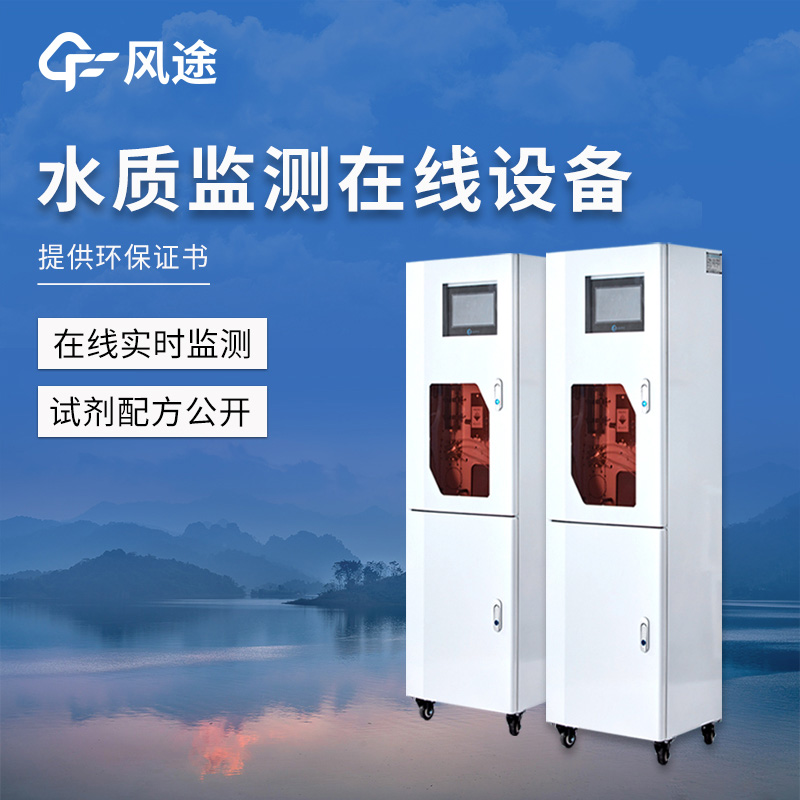Shandong Fengtu IOT Technology Co., Ltd
Sales Manager:Ms. Emily Wang
Cel,Whatsapp,Wechat:+86 15898932201
Email:info@fengtutec.com
Add:No. 155 Optoelectronic Industry Accelerator, Gaoxin District, Weifang, Shandong, China

Sales Manager:Ms. Emily Wang
Cel,Whatsapp,Wechat:+86 15898932201
Email:info@fengtutec.com
Add:No. 155 Optoelectronic Industry Accelerator, Gaoxin District, Weifang, Shandong, China
time:2024-11-18 13:11:32 source:Weather Station viewed:417 time
Automatic water quality monitoring is of great significance for freshwater resource management. Its monitoring parameters include physical parameters (such as temperature, pH value, turbidity) and chemical parameters (such as dissolved oxygen, residual chlorine). Temperature reflects the hydrothermal condition and affects biological and chemical reactions; pH value ensures the appropriate acidity and alkalinity of water; turbidity is used to evaluate the transparency of water, as suspended particles affect filtration and disinfection. Dissolved oxygen is important for aquatic organisms and chemical reactions, and chlorine residue ensures sufficient disinfectant in the water distribution system.
Common automatic monitoring methods include: First, automated sensors and equipment are installed at various points in the water system to continuously measure parameters such as pH value, conductivity, and turbidity, and transmit the data to the central monitoring system to achieve real - time feedback. Second, remote monitoring and data analysis, with the help of communication technology to process data remotely and respond quickly to deviations or anomalies. Third, pump controllers, whose sensors measure parameters such as pressure, flow, and temperature, so as to detect problems in water quality or treatment processes and ensure efficient and accurate monitoring and water quality maintenance.
The multi - parameter Water Quality Monitor System is an intelligent device that can simultaneously detect multiple water quality parameters and can comprehensively, quickly and accurately analyze water quality.
Its monitoring parameters cover physical and chemical aspects. Physical parameters include temperature (affecting aquatic organisms and chemical reactions), turbidity (reflecting the situation of suspended particles), and conductivity (reflecting the content of dissolved substances). Chemical parameters include pH value (related to the survival of aquatic organisms and the form of chemical substances), dissolved oxygen (a necessary condition for the health of the water ecosystem), ammonia nitrogen (high content will poison aquatic organisms), total phosphorus and total nitrogen (measuring the degree of eutrophication of water bodies).
The Water Quality Monitor System works based on sensor technology. Different parameters correspond to different sensors. The sensors convert physical or chemical reactions into electrical signals, and the parameter values are obtained after processing. Equipment types include desktop (used in laboratories with high precision), portable (convenient for field or emergency monitoring), and online (capable of real - time continuous monitoring). It is widely used in waterworks, sewage treatment plants, environmental protection departments, industry, aquaculture, agricultural irrigation and other fields.

ambient weather sensor is usually installed outdoors and can measure and record weather phenomena such as temperature, humidity, air pressure, wind speed, wind direction, and precipitation....
A meteorological and environmental monitoring system is an integrated system of equipment and software for monitoring and recording changes in atmospheric and environmental parameters. It monitors and records data on meteorological elements, environmental pollutants, etc. in real time for meteorolog...
Meteorological monitoring technologies are becoming increasingly indispensable in contemporary society with the increasing emphasis on rural development, agricultural progress and ecological protection. Especially in the environmental monitoring of rural streets, the integrated ultrasonic sensing te...
Campus weather station equipment is the main product of the source manufacturer [Windway Technology], we have launched many models of campus weather station equipment, among which the FT-XQX10 model sells best and is the most popular. So what exactly are the advantages of this equipment? Let's t...